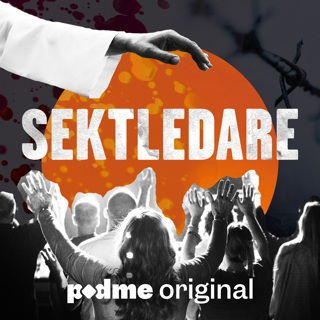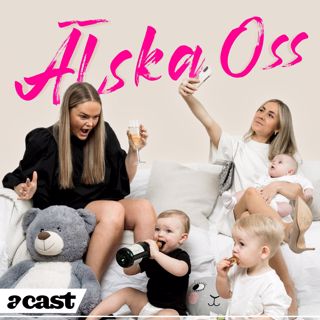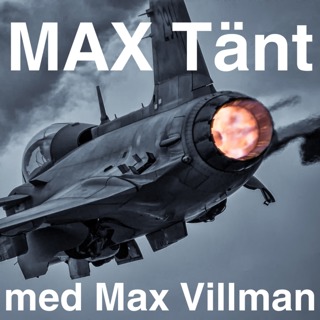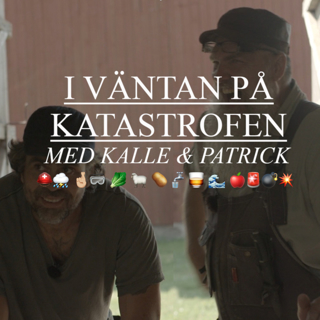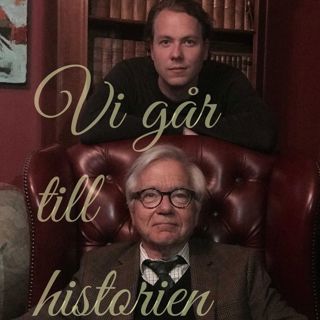
Ep. 376 New Frontiers in Spinal Tumor Ablation and Augmentation with Dr. Dana Dunleavy
In this episode, host Dr. Jacob Fleming interviews Dr. Dana Dunleavy about spinal tumor ablation and vertebral augmentation. Dana is an interventional radiologist and Director of Windsong Interventional & Vascular Services. --- CHECK OUT OUR SPONSOR Stryker Interventional Spine https://www.strykerivs.com --- SHOW NOTES Dana begins the discussion by reflecting on his upbringing in a small country town. His parents, his mother a midwife and his father a contractor, shaped his early experiences. His exposure to medicine began through his mother, particularly in witnessing childbirths. As he navigated his way through medical school, he contemplated various specialties, including orthopedic surgery, interventional radiology, and neurosurgery. He discovered incredible mentors in radiology and ultimately found his place in the field of interventional radiology. During his residency at Johns Hopkins, he sought externships in interventional spine and had the opportunity to immerse himself in this field for one month. He underscores the significance of participating in tumor boards and being a valuable contributor to the team in terms of diagnosis and treatment. He also emphasizes the value of calling consults when performing biopsies and the importance of meeting with the patient face-to-face and engaging in a thorough discussion of the treatment plan. Next, Dana delves deeper into the topics of bone tumor ablation and mechanical augmentation. He notes the importance of having a comprehensive understanding of the patient's anatomy and being well-versed in interventional tools. Cement extravasation is a feared complication of vertebral augmentation, so Dana discusses the role of implants as a means to establish structural support and mitigate the risk of cement leakage. In addition, he talks about his approach in combining ablation with mechanical augmentation so that the augmentation provides a structure after the ablation. Lastly, he discusses the use of advanced technology such as cone beam CT in trajectory planning. He shares his hybrid approach to performing bone biopsies, utilizing fluoroscopy during access and cone beam CT to ascertain accurate trajectory.
18 Okt 20231h 1min

Ep. 375 How to Get Independent IR Hospital Privileges with Dr. Bill Julien
In this episode, host Dr. Ally Baheti interviews Dr. Bill Julien about strategies to secure independent IR hospital privileges. Bill is an experienced vascular interventional physician at South Florida Vascular Associates. --- CHECK OUT OUR SPONSORS BD Advance Clinical Training & Education Program https://page.bd.com/Advance-Training-Program_Homepage.html Siemens Healthineers https://www.siemens-healthineers.com/ Reflow Medical https://www.reflowmedical.com/ --- SHOW NOTES Bill starts the episode by telling us why it is crucial for vascular and interventional physicians to have hospital privileges. We learn about Bill’s career progression. He discusses the growing pains he faced, how he effectively tackled these challenges, and how he became staff at a number of hospitals. Bill and Ally then unfold Bill’s detailed roadmap for how IRs can join hospital staff. They explore different pathways, and Bill shares his anecdotes and advice throughout. The doctors discuss how many contracts leave little opportunity to build longitudinal care practice, since the majority of time can be dedicated to large volumes of diagnostic reading time and consults for non-complex cases. At the conclusion of this episode, Bill emphasizes the need for SIR and other societies to step in and usher change. He also shares his 13-point action list for what SIR can do to accomplish this and help IRs secure hospital privileges (linked in Resources section). --- RESOURCES SIR Strategic Plan: https://tinyurl.com/SIRstrategicplan SIR Policy Statement: https://tinyurl.com/SIRpolicystatement Dr. Bill Julien’s Clinical Practice Position: https://tinyurl.com/clinicalpracticeposition2 ACR Policy Statement: https://tinyurl.com/ACRpolicystatement
16 Okt 202342min

Ep. 374 Independent IR: More Than Locums, It's a Calling with Dr. Ian Wilson and Dr. Kavi Devulapalli
In this episode, host Dr. Dana Dunleavy engages in a thought-provoking discussion about independent interventional radiology practice with two esteemed IRs, Dr. Kavi Devulapalli and Dr. Ian Wilson. Together, they discuss the complexities and opportunities in the ever-evolving landscape of IR. --- CHECK OUT OUR SPONSOR Philips SymphonySuite https://www.philips.com/symphonysuite --- SHOW NOTES We start off the discussion with Kavi expanding on early experiences in working a standard DR / IR split that most IRs tend to work in. He elaborates on how this split was not what he, as well as most IRs, intended to practice in when they entered the field. Thus, he then shifted over to the OBL space, a gratifying journey, but one he notes was difficult to navigate due to the intricacies. As Kavi finally transitioned to locum tenens work, he reflects on its appeal, despite the scarcity of opportunities. He notes that locum tenens work is usually in areas with an extreme dearth of IRs, such as rural areas. This conversation also explores the topic of exclusive contracts. Their impact on independent IR practices' access to hospital privileges is also explored, shedding light on the challenges faced by IRs seeking to expand their reach. Ian then notes that his locum tenens work was also in a rural setting, and how he had served this location for an extended period of time due to their lack of retention of IRs. The discussion then reveals a growing trend among physicians, as more and more are turning to locum work due to its exclusive focus on the IR aspect of the job that initially attracted them to this field. It's a mutual demand, as physicians seeking to specialize in IR find locum work to be a well-suited avenue, while areas of healthcare dearth are equally eager to tap into the expertise of these specialists. Both guests emphasize the urgent need for sustainable solutions to address this growing public health crisis in rural areas. This is precisely where organizations like Travelier come into play. Travelier was established by IRs, one of whom is Kavi, with a mission to bridge this critical gap by offering world-class IR services to communities with unmet needs. Their approach involves assembling dedicated physician teams and creating interventional radiology practices that generate revenue while providing viable work solutions for radiologists. This discussion is a testament to the adaptability and innovation that drive the field of IR, characterized by the commitment to improving healthcare access in areas where it is needed the most. It's also a testament to the increasing mutual demand for specialized IR services and the unique opportunities that come with it. --- RESOURCES Travelier: https://travelierir.com
13 Okt 202355min

Ep. 373 Sharp Recanalization Using the RF Wire with Dr. Marcelo Guimaraes
In this episode, host Dr. Ally Baheti interviews Dr. Marcelo Guimaraes about using radiofrequency wires for sharp recanalization. Marcelo is an interventional radiologist at the Medical University of South Carolina. --- CHECK OUT OUR SPONSORS BD Advance Clinical Training & Education Program https://page.bd.com/Advance-Training-Program_Homepage.html RADPAD® Radiation Protection https://www.radpad.com/ --- SHOW NOTES Marcelo begins by telling us about the Sniper technique, what RF wires are, and how they are used in sharp recanalization. He provides indications for using RF wires and his general workup and intraoperative flow for recanalization interventions. Marcelo also discusses the use of RF wires for iliocaval occlusions, SVC/upper extremity occlusions, and chronically occluded stents. Marcelo gives a comprehensive explanation of how and why the Sniper technique has evolved over the years. We also cover RF wires’ capabilities in crossing particularly, long occluded segments and the importance of cone-beam CT in complex cases. Ally and Marcelo then discuss applications of IVUS in sharp recanalization. Marcelo also shares his thoughts on possible alternatives to the RF wire and speaks about current and future applications of RF wires in non-vascular cases. Marcelo ends the episode by sharing tips on how to avoid unfavorable outcomes when using an RF wire, which includes his caution against using the Sniper technique in the office-based lab (OBL) setting. --- RESOURCES JVIR Paper from Dr. Marcelo Guimaraes on RF wires in recanalization of central vein occlusions: https://pubmed.ncbi.nlm.nih.gov/22739648/ PowerWire Radiofrequency Guidewire: https://baylismedtech.com/radio-frequency-wires/powerwire-rf-guidewire/
9 Okt 202354min

Ep. 372 IR Pathways Unveiled: Matching, Training, and Beyond with Dr. Neil Jain
In this episode, host Christopher Beck discusses the current landscape of IR training with Dr. Neil Jain, a fourth-year IR/DR resident at Georgetown University. Neil, who attended medical school in New Jersey, discusses his early desire for a diverse medical career encompassing clinical work, innovation, and mentorship. --- CHECK OUT OUR SPONSOR RADPAD® Radiation Protection https://www.radpad.com/ --- SHOW NOTES To start the episode off, Neil offers valuable advice on when to decide on interventional radiology as a career path. He emphasizes that the ideal timing varies based on one's portfolio, but he personally found his passion for IR during his first year of medical school, which facilitated building meaningful connections early on. The conversation then explores the different pathways to entering the field of interventional radiology, including integrated, ESIR, and classic routes. Neil provides insights into the pros and cons of each pathway, shedding light on the evolving landscape of residency applications. We then delve into the changing dynamics of application processes, as Neil discusses the nuances of the recent changes and how students can strategically navigate them. He introduces the concept of "signaling" features, gold and silver star preferences, and the importance of proper program selection when applying to IR residency. Neil also offers guidance on away rotations, emphasizing their significance for students aspiring to match into competitive IR programs. He underscores the dedication to IR as a crucial factor in securing a match. Another key factor is mentorship, and Neil highlights how peer and attending mentors as well as the resources provided by the Society of Interventional Radiology (SIR) can play an enormous role in matching into IR. The discussion then shifts to the virtual residency application process, with Neil offering valuable do's and don'ts for applicants. He underscores the importance of creating a proper environment and engaging in hobbies during virtual interviews. He also provides valuable advice on preparing for common interview questions, encouraging applicants to build compelling stories that showcase their clinical understanding. As the field of interventional radiology continues to evolve, Neil emphasizes the importance of staying informed and maintaining close connections with mentors and resources like SIR.
6 Okt 202359min

Ep. 371 Transverse Sinus Stenting for Idiopathic Intracranial Hypertension with Dr. Aaron Bress
In this episode, host Dr. Michael Barraza interviews neurointerventional radiologist Dr. Aaron Bress about transverse sinus stenting for benign intracranial hypertension. --- CHECK OUT OUR SPONSORS MicroVention FRED X https://www.fred-x.com/ RADPAD® Radiation Protection https://www.radpad.com/ --- SHOW NOTES Aaron starts off the discussion by describing his typical patient population that requires stenting. Patients usually present to the clinic experiencing headaches, vision issues, and pulsatile tinnitus. Typically, these patients are female and overweight, and have been referred from headache clinics, neurosurgeons, and ENT specialists. Around 50% of his patients arrive with prior diagnoses and a complete workup already done, and they only require the procedure to be done. For the remaining patients, Aaron starts from scratch, emphasizing meticulous preparation imaging, which includes MRV with contrast. Aaron has a sequential approach for outpatients. He typically conducts diagnostic and treatment processes separately, to ensure that no complicating fistulas are present during interventions. Three months after the procedure, patients are referred for follow-ups with ophthalmologists to verify progress. During the procedure, Aaron starts with a diagnostic angiogram from the groin. During this time, he also obtains pressure measurements using a 27 mm diagnostic microcatheter. He typically measures from superior central sinus and then works his way back. He then obtains an MR venogram, which typically shows bilateral transverse sinus stenosis, and he measures pressure on both sides of the sinus. For him, a significant enough gradient to stent is typically 10 mmHg, however clinical presentation remains a key factor in deciding to stent patients with a lesser gradient. For the treatment procedure, patients are prescribed 75 mg Plavix and baby aspirin for five days before the intervention. On the day of the procedure, general anesthesia is administered, due to its neck-based approach. This approach not only provides better maneuverability, but also avoids complications associated with the heart, given the complexities of navigating the transverse sinus junction. Stent sizing remains highly personalized and tailored to the size of the patient's sinus, with no rigid guidelines in place. Patients typically stay overnight, with clear communication regarding the likelihood of experiencing a headache post-treatment. Following the procedure, they adhere to a six-month regimen of the dual antiplatelet therapy, which improves their recovery and treatment outcomes.
2 Okt 202331min

Ep. 370 Recan In Benign Venous Occlusions with Dr. Minhaj Khaja
In this episode, host Ally Baheti interviews Dr. Minhaj Khaja about iliocaval reconstruction. Minhaj is a Clinical Professor of Radiology and Cardiac Surgery and Associate Program Director of Interventional Radiology Residency at the University of Michigan. --- CHECK OUT OUR SPONSOR BD Advance Clinical Training & Education Program https://page.bd.com/Advance-Training-Program_Homepage.html --- SHOW NOTES Minhaj begins by sharing how deep venous disease typically presents, as well as his clinical workup. He emphasizes the importance of gathering prior imaging, taking a thorough history and comprehensive physical exam, and calculating Villalta scale and Venous Clinical Severity Score (VCSS) for deep venous disease. Minhaj then tells us more about his approach to complex cases. We cover his setup and intra-op workflow in patients with good inflow, poor inflow, and prior chronically occluded stents. Minhaj and Ally also discuss anticoagulation, types of stents, crossing devices/sharp recanalization, and treating inflow via tibial vein access. Minhaj also shares his experience with using arterial re-entry devices for crossing long, occluded venous segments, radiofrequency wires for chronically occluded stents, and the new RevCore mechanical thrombectomy device made specifically for venous stent thrombosis. Ally and Minhaj then conclude the episode by highlighting the components of good follow up for patients. --- RESOURCES C-TRACT Venous Trial: https://clinicaltrials.med.nyu.edu/clinicaltrial/536/c-tract-study;-chronic-venous/ RevCore Mechanical Thrombectomy Device for Venous Stent Thrombosis: https://www.inarimedical.com/revcore/ Venovo Venous Stent: https://www.bd.com/en-us/products-and-solutions/products/product-families/venovo-venous-stent-system Zilver Vena Stent: https://www.cookmedical.com/products/f3af274c-42cc-42cd-a0db-e5715ad57cc4/ Abre Venous Stent: https://www.medtronic.com/us-en/healthcare-professionals/products/cardiovascular/deep-venous/abre-venous-stent.html
29 Sep 202357min

Ep. 369 Advancing Vascular Medicine: Inside VIVA’s Multidisciplinary Approach with Dr. Maureen Kohi and Dr. Niten Singh
In this episode, host Dr. Aaron Fritts interviews Dr. Maureen Kohi and Dr. Niten Singh on the VIVA Foundation’s multidisciplinary approach to advancing vascular medicine. --- CHECK OUT OUR SPONSORS Medtronic ClosureFast https://www.medtronic.com/closurefast6f Philips Image Guided Therapy Devices Academy https://resource.philipseliiteacademy.com --- EARN CME Reflect on how this Podcast applies to your day-to-day and earn free AMA PRA Category 1 CMEs: https://earnc.me/PO5TFV --- SHOW NOTES Maureen is an interventional radiologist and Professor and Chair of the Department of Radiology at University of North Carolina - Chapel Hill. Niten is a vascular surgeon and Associate Chief of Vascular Surgery at University of Washington. Both serve on the board of directors at VIVA. We begin with how Maureen and Niten became involved at VIVA. They discuss the history and foundations of VIVA. The duo goes on to describe how VIVA has evolved throughout the years. Maureen speaks on how VEINS has become a comprehensive educational meeting for all things venous disease and interventions, which complements VIVA’s arterial focus. Niten and Maureen then explain how VIVA and VEINS have become more than just meetings. They are conglomerates of multiple initiatives for all things vascular driven by the central question of “What is best for the patient?” The duo also sheds light on the unique inner-workings of VIVA, highlighting the foundation’s speedy, nimble, and inclusive approach to the rapidly advancing landscape of vascular and endovascular surgery. We get a special look of what to expect at VIVA & VEINS Annual 2023 Conference at Wynn Las Vegas (October 28th - November 2nd) from Niten and Maureen. We conclude this episode with Maureen and Niten’s thoughts on how we can improve vascular care for our underserved patient populations and what role OBLs will play in this equation going forward. --- RESOURCES VIVA 2023 Annual Conference Registration: https://viva-foundation.org/viva-programming VEINS 2023 Annual Conference Registration: https://viva-foundation.org/veins-programming VIVA Vascular Leaders Forum on Paclitaxel Safety (2019): https://evtoday.com/articles/2019-mar/highlights-from-the-viva-vascular-leaders-forum-on-paclitaxel-safety
27 Sep 202330min









